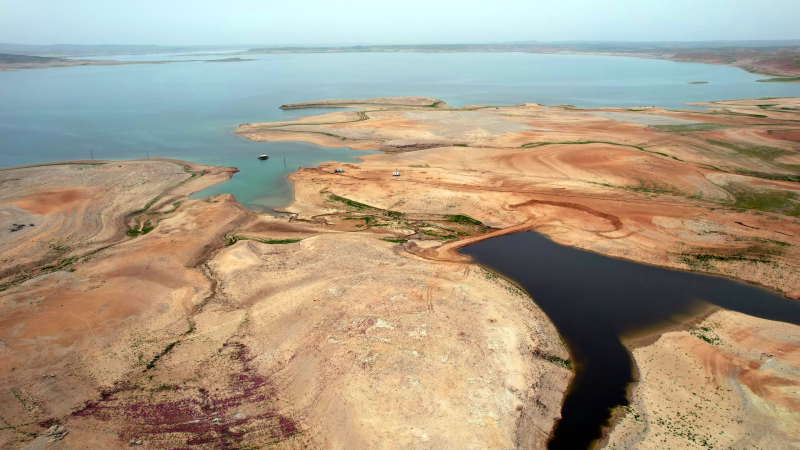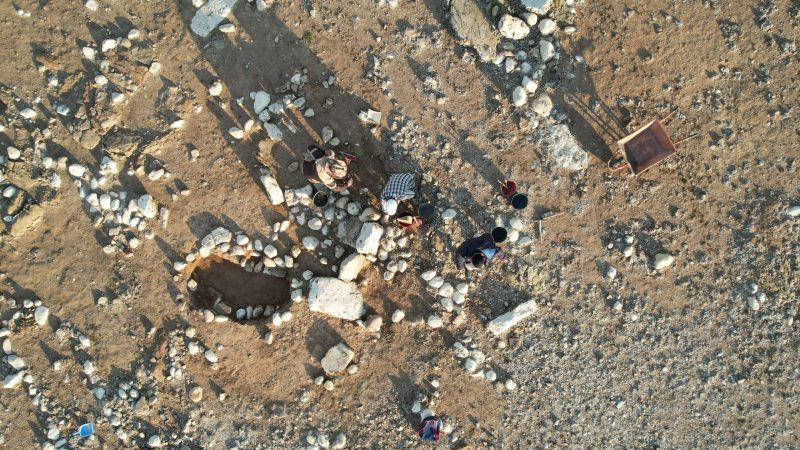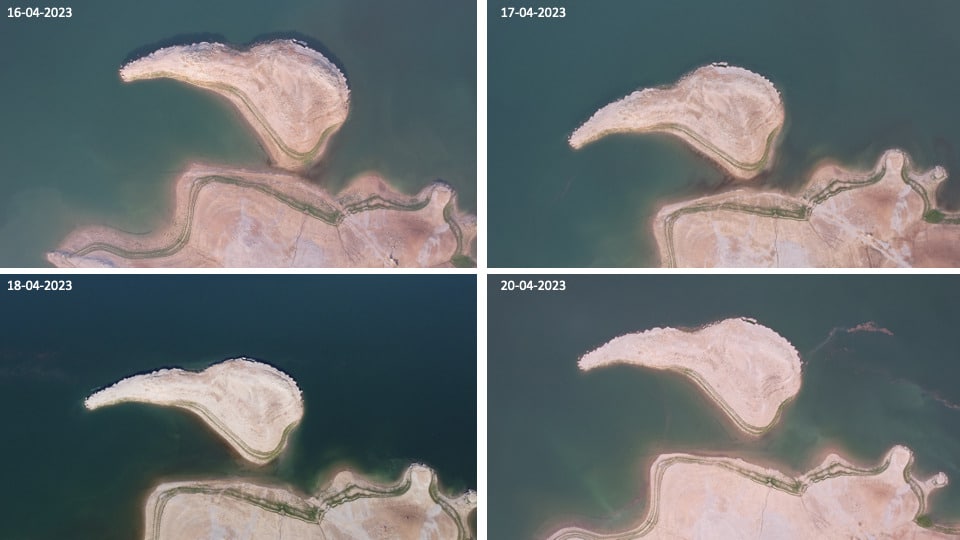An area of 150 square meters was cleared and 25 graves were exposed to investigate the spatial relationships between them. These graves are primarily stone cists of different sizes ranging from over 3 m in length to only 40 cm in diameter. The majority of the graves are rectangular (Fig. 4), but there are also oval and round graves. The team determined that the Cham Pashaya II cemetery has graves from multiple phases based on their spatial relationships. The variety of sizes and forms also supports this interpretation.
We decided to further investigate and fully excavate 5 graves, choosing a selection of the different typologies and sizes (Fig. 5).
Despite widespread ancient and modern looting and the very poor state of preservation of the bone material due to the water-logged environment, we found that it was still possible to reconstruct some of the funerary practices and to establish a chronological framework for the cemetery. Graves were meant to host one or more individuals. The larger ones were apparently used for longer periods, and had evidence to show that they were re-opened many times.



